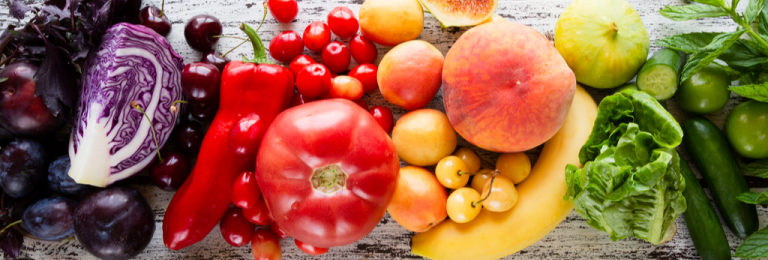Fruit or Vegetable?
Fruit or Vegetable?
Teach children the differences between fruit and vegetables in this fun and interactive activity. Children will use their sight, touch, smell, and taste to determine if something is a fruit or vegetable!
The differences:
Fruits and vegetables are a great way to add colour, flavour, and fun to any meal or snack. Fruits grow on trees or other plants and are characterized by their seeds and are the ripened part of a flower. They often have a sweet, sour or citrusy flavour. Examples include oranges, bananas, cucumbers, and even tomatoes.
Vegetables grow in the ground or on plants and do not have seeds. They can have a bitter, sour, fresh, or savoury flavour. Examples include carrots, asparagus, lettuce, and mushrooms.
What you’ll need:
- 3 different fruits and 3 different vegetables, cut into medium sized pieces, as well as the whole fruit or vegetable for the children to look at and touch.
- Try to choose two common fruits and vegetables and one that might be unfamiliar to the children
- Examples of fruits to use: oranges, bananas, kiwi, strawberries, blueberries (cut in half), lemons, cucumber, or peppers
- Examples of vegetables to use: asparagus, mushrooms, celery, lettuce, or kale
- 6 bowls (one for each fruit or vegetable)
- Tongs
- 1 plate per child, half labeled fruit and half labeled vegetable
Note:
Please ensure that the fruits and vegetables you choose are suitable to avoid the risk of choking.
It would be advised to steam the vegetables you choose (if appropriate). It is not recommended that children under 4 consume raw vegetables because they provide a higher risk for choking. For more information on what foods are safe for children check out this article from HealthLink BC.
How to Play:
- Place each cut up fruit and vegetable into their own bowls.
- Have each child close their eyes and place one piece of fruit or vegetable on their plate.
- Ask the children to describe how the piece of food feels and what it smells like. Does it smell sweet? Fresh? Citrusy? Earthy? Ask them if they can feel any seeds in the food and ask them to guess what the food is. Have the children taste the food if they want to and describe its taste.
- It’s important not to pressure children into tasting food if they don’t want to. For more information on this concept head to the Division of Responsibility post.
- Tell the children to open their eyes to see what piece of fruit or vegetable they have in their hand.
- Ask the children to guess if the food they have is a fruit or a vegetable and place it on one either the fruit or vegetable side of their plate.
- Repeat steps 1-6 for the remaining foods.
- Go through each food and discuss why they are a fruit or a vegetable.
Source: Hannah Bailey, 3rd year UBC Dietetics student
